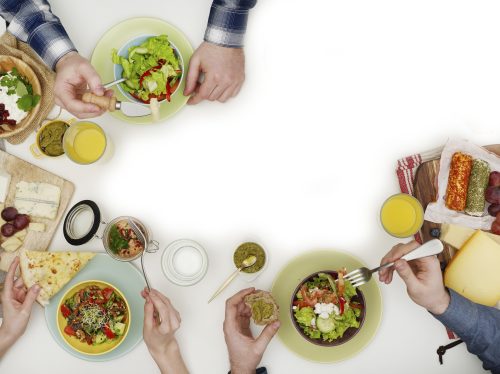
Niki Bezzant talked to specialist dietitian Anna Richards about the trials of eating out when you have coeliac disease.
It’s relatively easy to eat gluten free when you’re cooking your own food. There are more foods that do not contain gluten than do. It’s easy to eat fruit and vegetables, meat, fish, chicken, eggs, milk, cheese, nuts and seeds, rice, millet, quinoa and amaranth. It’s easy to read a packet to check for gluten.
But eating out can be a real minefield. People with coeliac disease constantly wonder and doubt whether the ‘gluten-free’ food they’ve chosen has been contaminated by gluten. Research shows dining out to be the most stressful part of having coeliac disease.
What are the issues with gluten in restaurants and cafés?
Anna: The main issue is cross-contamination: where tiny traces of gluten have transferred from fingers, tongs, boards and knives. People who can’t eat gluten have to consider how much they trust the person purchasing, storing, preparing, cooking, serving and garnishing their food. How many people are there in that food chain to trust? Do they know anything at all about coeliac disease and the fact that even the tiniest crumb is enough to cause major mayhem? It’s Russian roulette — will it be okay this time? Or will there be days of unwelcome symptoms?
What are the consequences of accidentally eating gluten?
Anna: For people with coeliac disease, being ‘glutened’ or inadvertently eating gluten and copping the steam train that arrives behind it, is not instant or dramatic as in the case of a food allergy. It does not provoke hives or swelling or anaphylaxis; you don’t need an EpiPen or an ambulance. It’s far more closed-door than that.
Everyone is different, but symptoms could include a sore stomach, vomiting or diarrhoea and can last for days following the event.
What are the rules around foods being labelled ‘gluten free’?
Anna: Gluten has an established threshold. It can be measured at three parts per million. Below that level, a food is deemed to be gluten free. Above it, gluten is measurable and a food is deemed to be gluten-containing. The onus is on the producer of the food to decide on which side of the fence they sit.
This is a point that is either unknown or misunderstood by many cafés and restaurants. It’s not uncommon to see food labelled gluten free because it doesn’t have gluten in the ingredients, but if staff don’t understand the huge issue of the risk of cross-contamination, it can completely negate the effort that has gone into producing gluten-free food.
What’s being done to make restaurant and café food safer?
Anna: The Coeliac Society is running a pilot Dining Out Programme, based on similar successful UK and Italian programmes. This is a training and certification programme for restaurants and cafés so they can be trained in best practices, and then accredited. People with coeliac disease can then be assured that all the staff involved in the food preparation chain understand what it means to produce a truly gluten-free meal.
The Dining Out Programme pioneers are Ballantynes, Christchurch; Charley Noble, Wellington; The Hip Group (St Heliers Bay Café & Bistro and Ortolana), Auckland; and Hell Pizza. The pilot programme is running until the end of June.
Tips for eating out with coeliac disease
- Use the word ‘coeliac’, not just ‘gluten free’ when talking to wait staff. It differentiates coeliacs from people who are gluten free by choice.
- If the staff don’t understand what coeliac means, they are unlikely to cater for the coeliac diner’s needs. It might pay to consider eating somewhere else.
- Use open-ended questions — you will get more relevant answers, for example, “What else do you cook in the deep fat fryer?” rather than “Are the fries gluten free?”
- Specifically ask about less-obvious sources of gluten in the dishes you are choosing, i.e. garnishes, ham, bacon, fries, soy sauce, Worcestershire sauce, stock, cornflour.
- Do they ‘get it’? First impressions count. Are gluten-free options presented separately with separate tongs? Gluten-free options rubbing shoulders with gluten-containing food could be contaminated with gluten and not safe for coeliacs.
Coeliac disease
- Affects one in 70 people, with half of those undiagnosed
- Is a lifelong autoimmune disorder
- Incidence is increasing (as it is for all autoimmune diseases)
- Can occur at any age
- Can occur at any time — a negative test doesn’t mean not ever; it just means not on the day of the test
- Has a genetic link — Scots and Irish rate highly; relatives with coeliac disease increase the odds
- May cause crippling symptoms: abdominal pain, diarrhoea, constipation, nausea, vomiting, joint pain
- May have no overt symptoms
- Will damage the gut lining and ability to absorb nutrients
- Can, if undiagnosed and/or if gluten continues to be consumed, cause infertility, poor growth and calcification of teeth and bones in children, multiple nutrient malabsorption, links with depression and, occasionally, bowel cancer.
www.healthyfood.com










